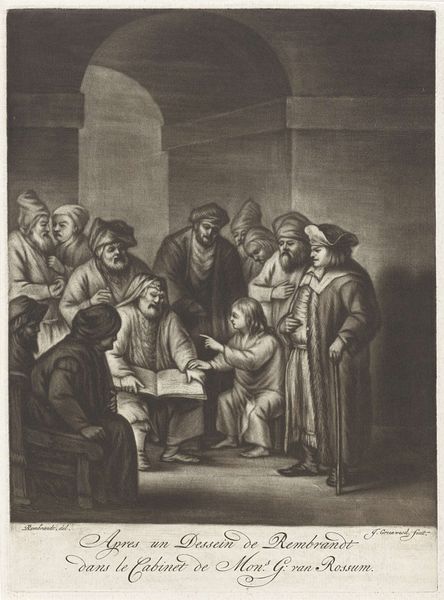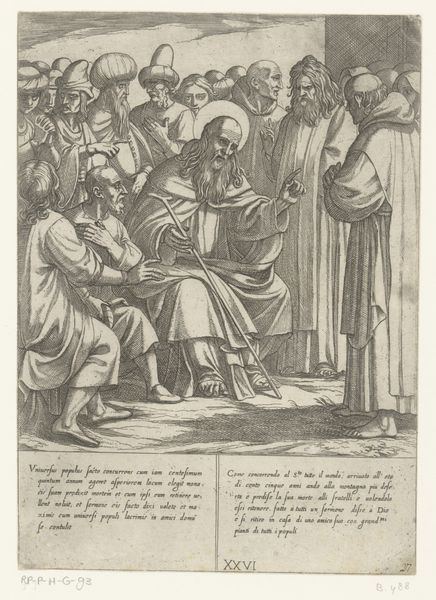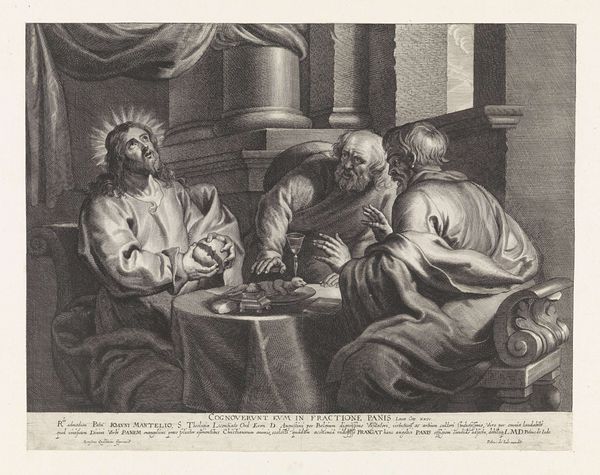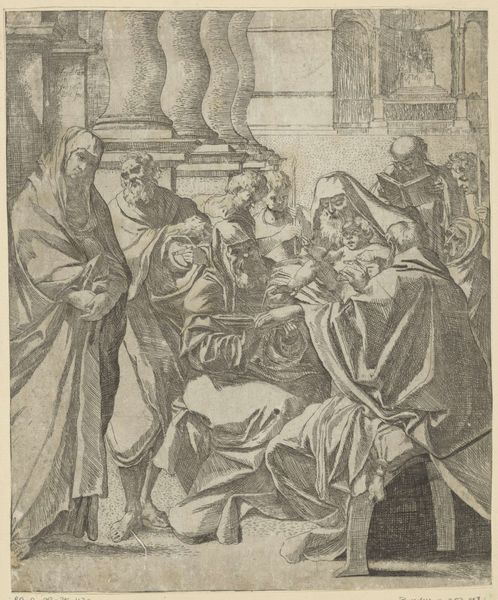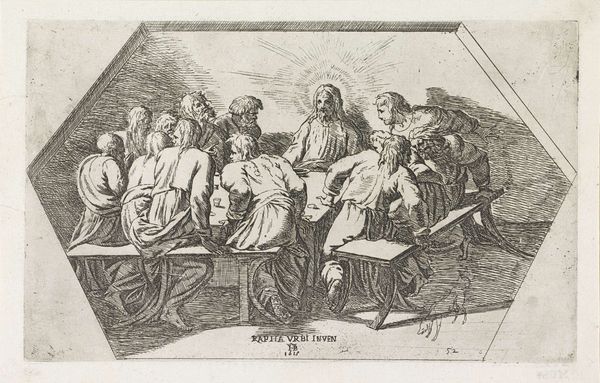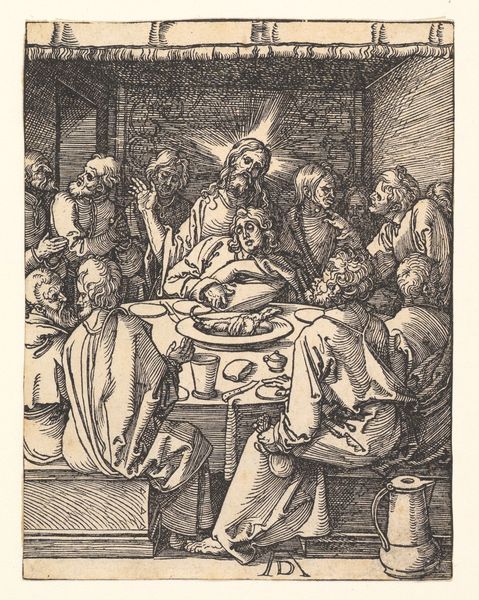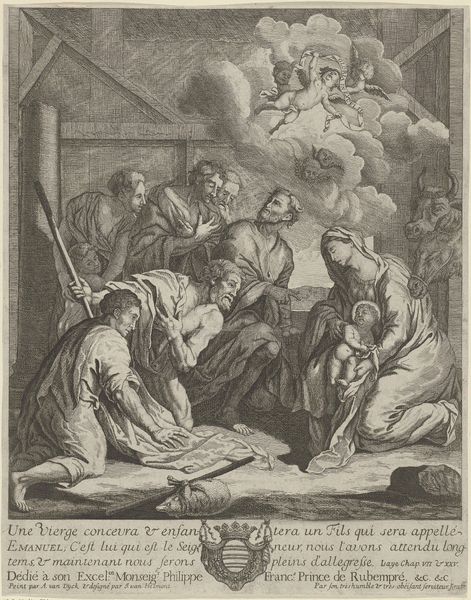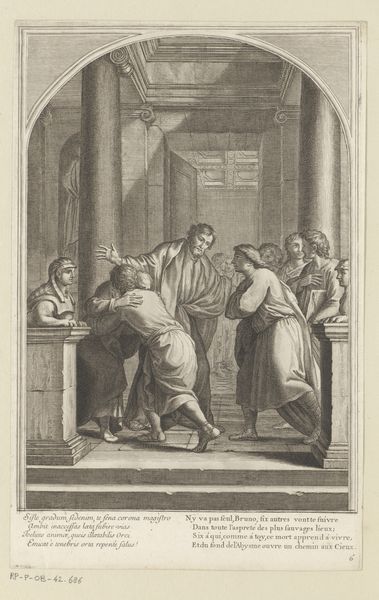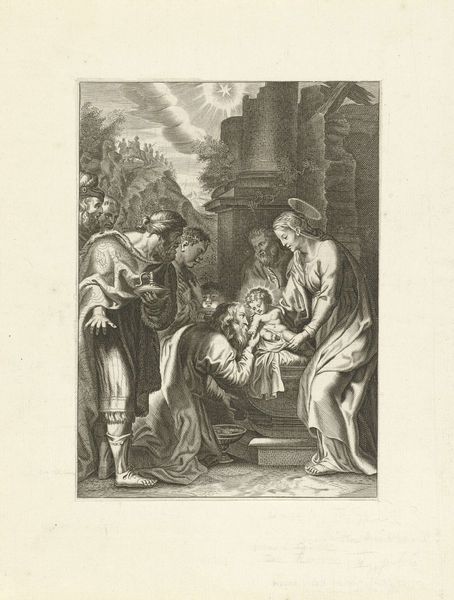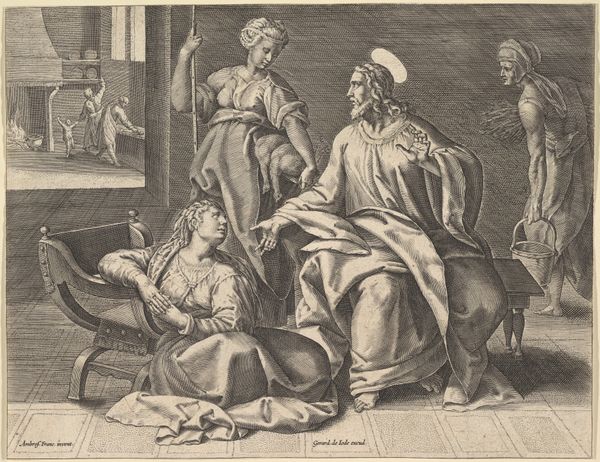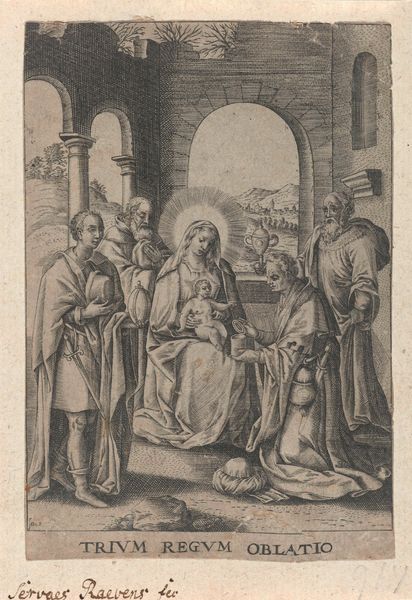
print, etching
#
narrative-art
#
baroque
# print
#
etching
#
dog
#
figuration
#
genre-painting
#
history-painting
Dimensions: height 321 mm, width 321 mm
Copyright: Rijks Museum: Open Domain
Willem van Swanenburg created this print, Meal at Emmaus, using engraving. The scene depicts the moment when the resurrected Christ reveals himself to two disciples during a meal. But the image is more than a straightforward illustration of a biblical story. It’s a product of its time and place: the Dutch Republic in the early 17th century. The Dutch Golden Age was a period of immense social and economic change. The rise of a wealthy merchant class and new forms of civic institutions shaped the art world. Artists increasingly produced work for the open market rather than for the church. The Rijksmuseum's collection itself reflects these new social structures. Historical research can tell us a lot about the conditions that shaped this image, for example, how printmaking served a wider public than painting. The study of social and institutional contexts can enrich our understanding and appreciation of the work.
Comments
No comments
Be the first to comment and join the conversation on the ultimate creative platform.
